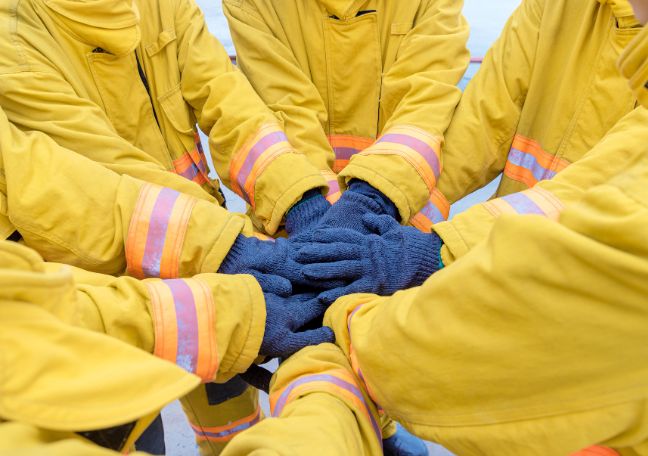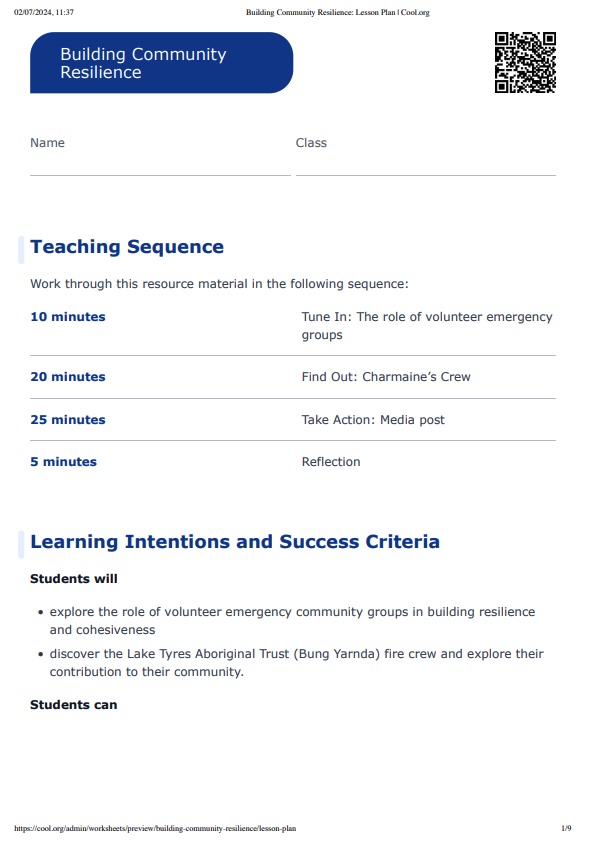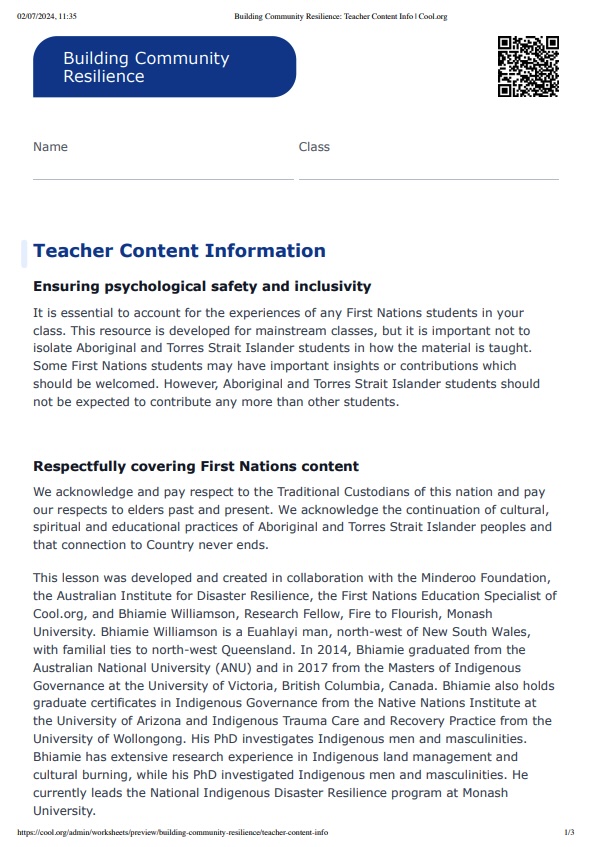Lesson summary
Students will explore the role and contribution of volunteer emergency groups by examining the media representation of ‘Charmaine’s Crew’ (the Lake Tyres Aboriginal Trust - Bung Yarnda, fire crew) and the impact representations can have on building community cohesiveness. Students will draw on this case study to create a social media post about a First Nations volunteer group, taking into account representation and the impact this has on community resilience and cohesiveness.
Learning intentions:
Students will...
- explore the role of volunteer emergency community groups in building resilience and cohesiveness
- discover the Lake Tyres Aboriginal Trust (Bung Yarnda) fire crew and explore their contribution to their community.
Success criteria:
Students can...
- explain how and why the Lake Tyres Aboriginal Trust (Bung Yarnda) fire crew (‘Charmaine’s Crew’) work together and contribute to their community
- analyse media representations of the crew and the flow-on impact this has on community resilience
- create a media post about a First Nations volunteer group, taking into account representation and the impact this has on community cohesiveness.
Lesson guides and printables
Curriculum links
Select your curriculum from the options below.
Lesson details
Skills
This lesson is designed to build students’ competencies in the following skills:
- critical thinking
- collaboration
- curiosity
- digital literacy
- intercultural understanding
Curriculum Mapping
Australian Curriculum (v9.0) content description:
Year 9 Civics and Citizenship
- How and why individuals and groups, including community, religious and cultural groups, participate in and contribute to civic life in Australia and to global citizenship (AC9HC9K05)
- The influence of a range of media, including social media, in shaping identity and attitudes to diversity (AC9HC9K06)
Relevant parts of Year 9 achievement standards: By the end of Year 9, students identify the reasons individuals and groups participate in and contribute to civic life nationally and globally. They explain the influence of the media on reflections of identity and diversity.
NSW Syllabus outcomes: AST5-2, AST5-7, AST5-9
General capabilities: Critical and Creative Thinking, Intercultural Understanding, Literacy, Personal and Social Capability
Cross-curriculum priority: Aboriginal and Torres Strait Islander Histories and Cultures, Sustainability
Level of teacher scaffolding: Medium - Teachers will need to facilitate class discussions and support students’ reading, comprehension and research.
UN Sustainable Development Goals
- Target 15.1: By 2020, ensure the conservation, restoration and sustainable use of terrestrial and inland freshwater ecosystems and their services, in particular forests, wetlands, mountains and drylands, in line with obligations under international agreements.
Resources Required
- Charmaine Sellings ABC news article
- Coolagram social media post template
- Device to show a video
- Devices for students to access online media articles
- Student Worksheet
- Whiteboard
- Whiteboard markers
Additional Info
We would like to acknowledge and express our gratitude for the expertise and advice provided in the creation process of these resources from the following parties:
- The Australian Institute for Disaster Resilience (AIDR)
- Bhiamie Williamson (Monash University)
Related Professional Learning
How to Teach a Unit on Fire and Flood Resilience:
Quick summary: This course will provide a roadmap for how to approach teaching a unit on fire and flood resilience. While primarily focused on fire and flood resilience, it will reference the importance of an all-hazards approach to disaster resilience education.





Welcome back!
Don't have an account yet?
Log in with:
Create your free Cool.org account.
Many of our resources are free, with an option to upgrade to Cool+ for premium content.
Already have an account?
Sign up with:
By signing up you accept Cool.org's Terms and Conditions(Opens in new tab) and Privacy Policy(Opens in new tab).